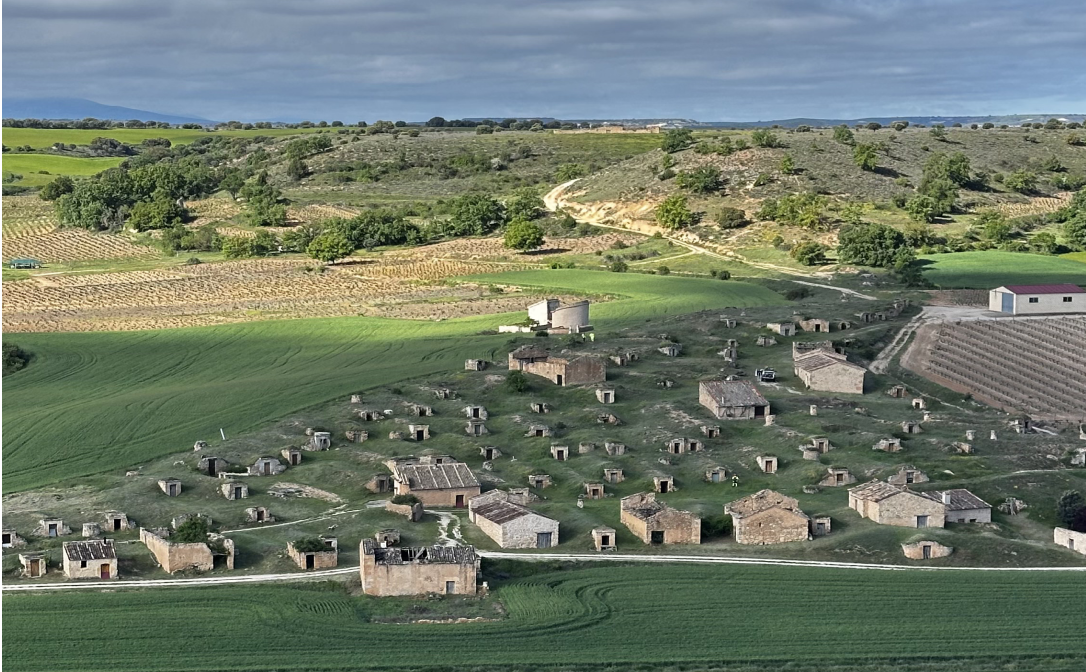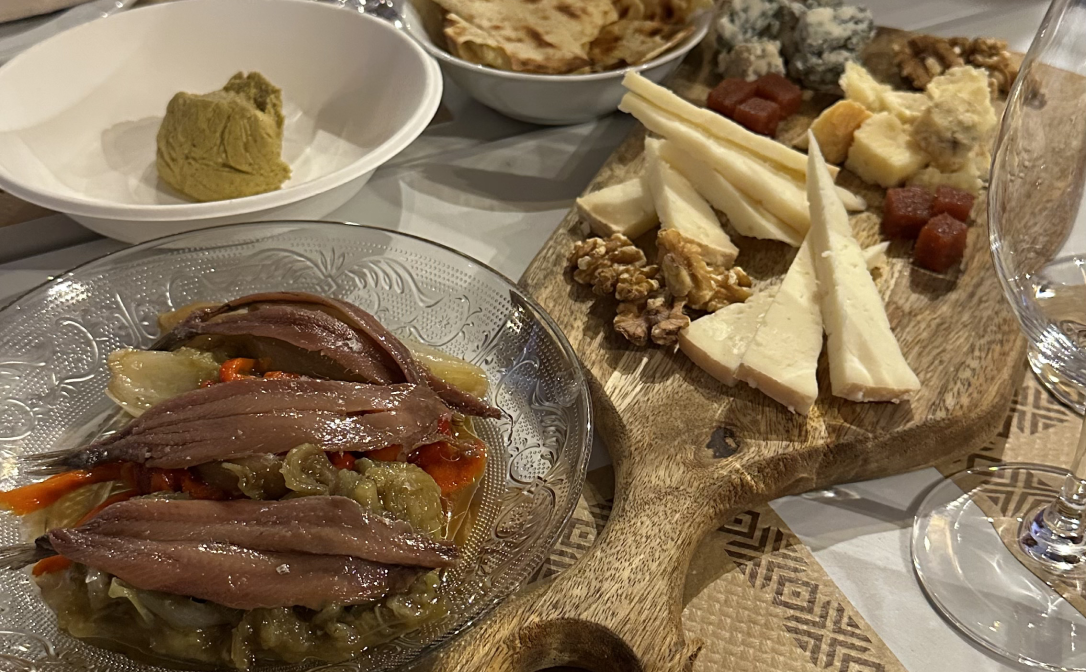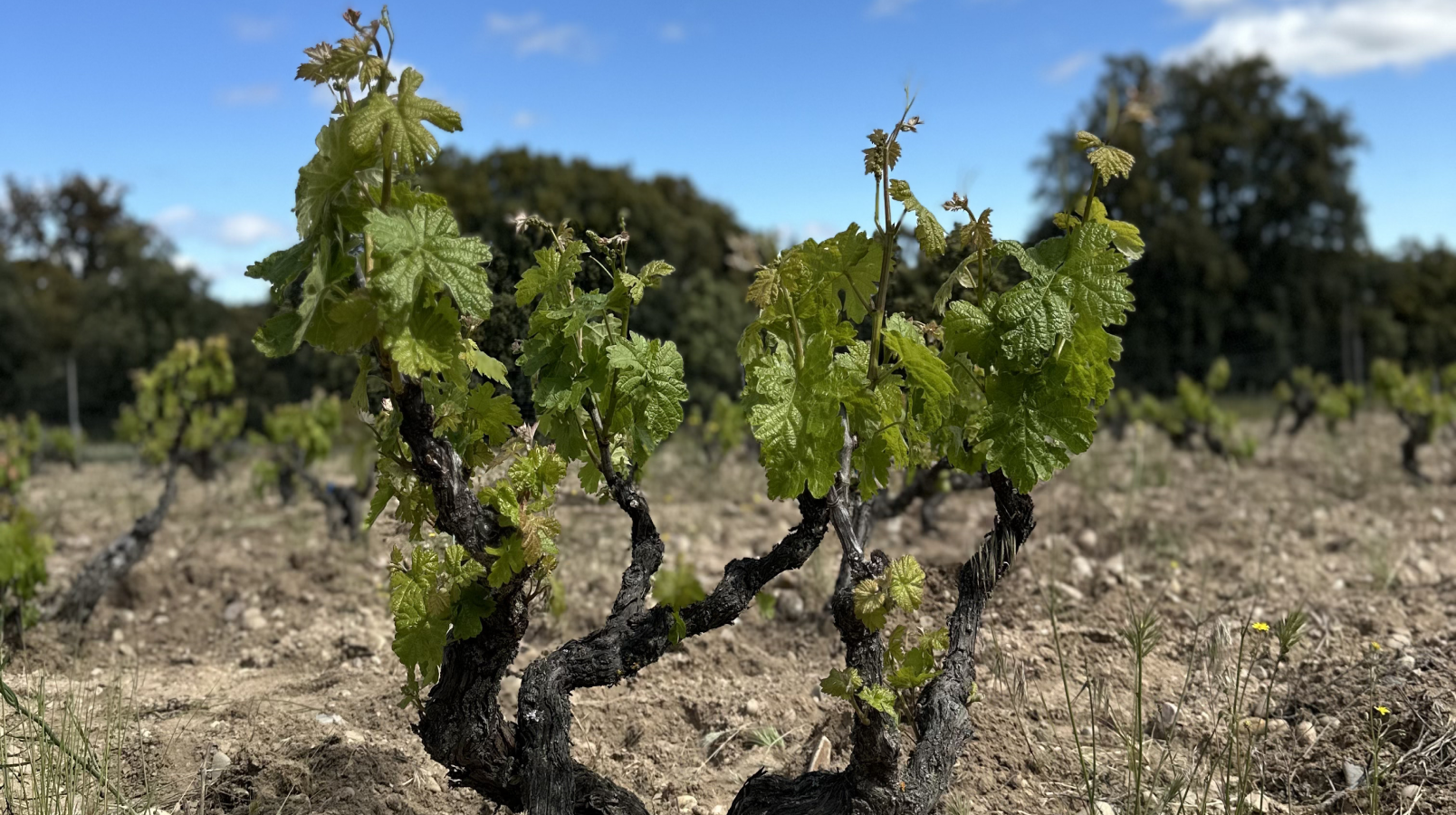Photo credit: Sera Karamshuk
We know Ribera del Duero for its age-worthy, powerful red wines made from Tempranillo. What’s spoken about less often is that this same region is home to some of the oldest vines in Spain (up to 190 years old) and unique underground family wineries where, in a village of 100 families, you might find 90 wineries carved beneath the streets. Add to that a stunning landscape shaped by the Duero river, and you begin to see Ribera as more than just a producer of bold reds.
This blog, written by WSET School London educator Sera Karamshuk, will take you through the region’s treasures, from its ancient cellars and historic vineyards to its modern expressions and wine tourism trails, and guide you on what to expect when you get there.
The history of Ribera del Duero
We often praise wine regions today for their strict yield controls and harvest dates. But did you know Ribera del Duero was already doing this back in the 13th century, when Queen Violante laid down Spain’s first harvest rules? By the 1500s, Aranda de Duero was booming, exporting thousands of barrels north to wealthy Basque markets, its streets hiding a secret seven-kilometre maze of underground cellars. Then came phylloxera, the Civil war, WWII and mass emigration that nearly wiped Ribera out. But against all odds it bounced back, and now with more than 300 wineries and 26,000 hectares under vine, it’s one of Spain’s most powerful comeback stories.
The land
Landlocked by mountain ranges, the region runs along the Duero river. Vineyards are located on step-like terraces, steep slopes and the lofty páramos, plateaus that rise to 900- 1100 metres. The climate here is dry Mediterranean but with extreme continentality: winters can drop to –20 ºC and summer heat reaches 44 ºC. With around 2,400 hours of sunshine, barely 400 mm of rain, and a diurnal temperature swing of 20–22 ºC, vines are pushed to their limits producing smaller, thicker-skinned grapes. These conditions also help preserve acidity and concentrate aromas. Spring frosts are the region’s biggest problem as those can arrive as late as June, cutting yields by more than 70% in unlucky years.
Ribera del Duero stretches across four provinces, and each one tells a different story.
Soria feels wild and remote, with scattered micro-plots and sandy soils that protect some of Spain’s oldest vines. This is where you need to go if you want to stand amongst 190-year-old, ungrafted Tempranillo bush vines.
Burgos is the beating heart of the region, with more than 70% of its vineyards, a rich patchwork of soils, and vibrant festivals. Here you’ll also discover the old lagares, underground wineries hidden in barrios de bodegas (winery districts) that once dotted the valley and are now being carefully restored.
Valladolid shows a more modern face, with larger, more uniform plots, but it’s also visually stunning. From the valley floor you see the páramos rising like walls on both sides, and in the western part of the province the moorlands sit just five kilometres apart, framing the river like a natural amphitheatre.
Segovia, though the smallest, punches above its weight. Its vineyards climb above 1,000 metres, delivering some of the freshest fruit in the DO and offering a glimpse of how altitude shapes Ribera’s future.

Photo credit: Sera Karamshuk
Ribera del Duero’s wines
When you think of Ribera del Duero, you probably think of Tempranillo, or Tinto Fino as it’s called here. And rightly so: it accounts for around 95% of all plantings in the DO. But Tempranillo doesn’t stand completely alone. Four other black grapes are officially permitted: Cabernet Sauvignon, Merlot, Malbec and Garnacha Tinta, while the one authorised white grape is Albillo Mayor, a historic variety often used in field blends.
By law, all red wines from Ribera del Duero must be made with at least 75% Tinto Fino. The remaining 25% can come from the authorised grapes, including Albillo Mayor. There’s even provision for older vineyards: minor varieties such as Bobal, Garnacha Tintorera, Monastrell, Pirulé and Alarije may appear in blends, but only if they were planted before 21 July 1982 and only when Tinto Fino remains dominant.
For decades Ribera del Duero has been all about red, but these days it faces the rise of white wines from Albillo Mayor. This is the region’s historic white grape, once used quietly in blends only, but today it’s finally being bottled on its own. Albillo holds on to its naturally high acidity even in the face of climate change, and it ripens without sending sugars (and alcohol) soaring. That makes it perfect for the kind of wines producers are now crafting: textured, perfumed whites often aged on their lees or in oak, or even with some skin contact.
Plantings are still tiny, at about 450 hectares (less than 2% of the DO’s vineyards) but they’re growing fast. Since Albillo is still new on the market, bottles are scarce outside Spain, making Ribera one of the few places where you can taste them at the source.
A handful of producers are also experimenting with traditional method sparkling wines made from Albillo. Thanks to that acidity, the early results are bright, tense and full of promise. It’s still early days, but if you want to taste Ribera’s future - and not just its past of legendary reds and ancient vines - this is the moment to go.
Another wine style making a comeback in Ribera is clarete, the region’s traditional form of rosé. Before the 1980s, families would bring their mixed red and white grape harvests to the village lagares, crush them by foot in open stone troughs, and let fermentation kick off naturally with the native yeasts. With only a few days’ skin contact and plenty of white grapes in the blend, the wines showed a pale, “clear” colour, the hallmark of clarete, a co-fermentation style long before the term even existed.
Our Level 2 Award in Wines teaches you how to taste and describe wine using our Systematic Approach to Tasting.
Today the Pliego de Condiciones makes no legal distinction between rosados (modern classic pale style rosé) and claretes, allowing producers to employ either regardless of production method.
Most claretes are made from Tinto Fino alone, but DO rules only require 50% of the authorised black grapes, leaving plenty of room for creativity. Some producers co-ferment Tempranillo with Albillo Mayor and label it as clarete, while others play with forgotten old-vine varieties. Both direct pressing and short maceration are common, often followed by lees ageing for extra texture and in some cases even oak. The result can be anything from a fresh, youthful pink to a structured Reserva with the power to age gracefully in bottle for a decade or more.
Why you need to visit Ribera del Duero
I hope you’re desperate to visit now. But I also know that fitting in all the wine fun when travelling with family isn’t always easy. Let me show you why Ribera has something for everyone.
It’s less than a two-hour drive from Madrid, and once you’re here, the official Ribera del Duero Wine Route connects castles, monasteries and wineries across all four provinces.
Alongside tastings and vineyard visits, the route is packed with festivals. Major events include the Grape Harvest Festival, the Sonorama-Ribera rock festival, the colourful Descent of the Angel at Easter, and the quirky Fiesta Romana de Baco.
History lovers can explore castles like Peñafiel or Peñaranda de Duero and monasteries such as Santa María de Valbuena.
If hiking is something you are passionate about, there’s a 750-km Duero Nature Trail.

Photo credit: Sera Karamshuk
And of course, food! Must tries and best pairing for local wines here include: lechazo (Castilian roast suckling lamb), local cured sheep cheeses, blood sausages (the PGI Morcilla de Burgos), Cocido garbanzo stew, and white asparagus of Tudela de Duero.
Tapas often act as miniature versions of whole courses. The Duero River Valley is also home to an increasingly diverse collection of modern restaurants (including several Michelin-starred examples) that offer creative and exciting interpretations of these classics.
Ready to explore?
Ribera del Duero is thriving today, taking bold modern steps, from reviving clarete to planting Albillo Mayor, to ensure its wines remain relevant for generations to come. It feels like a second birth for the region, and there’s no better time to explore it than now.


